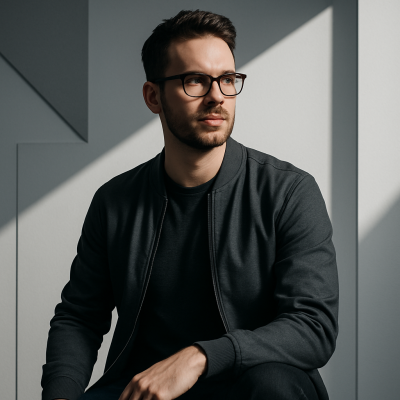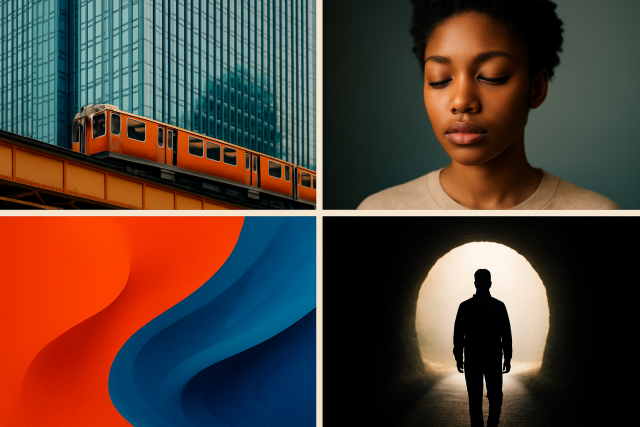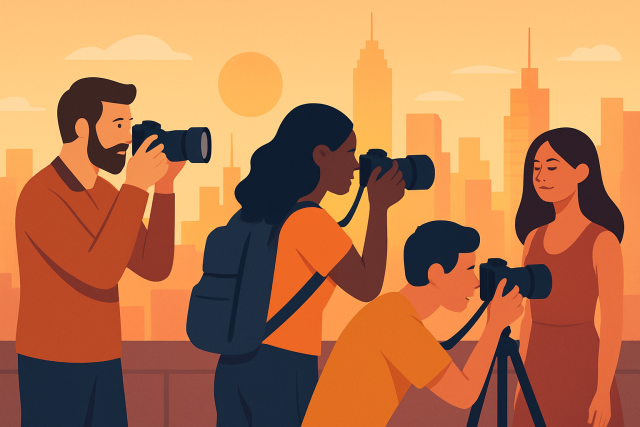How Emerging Artists Shape Contemporary Photography in the Philippines
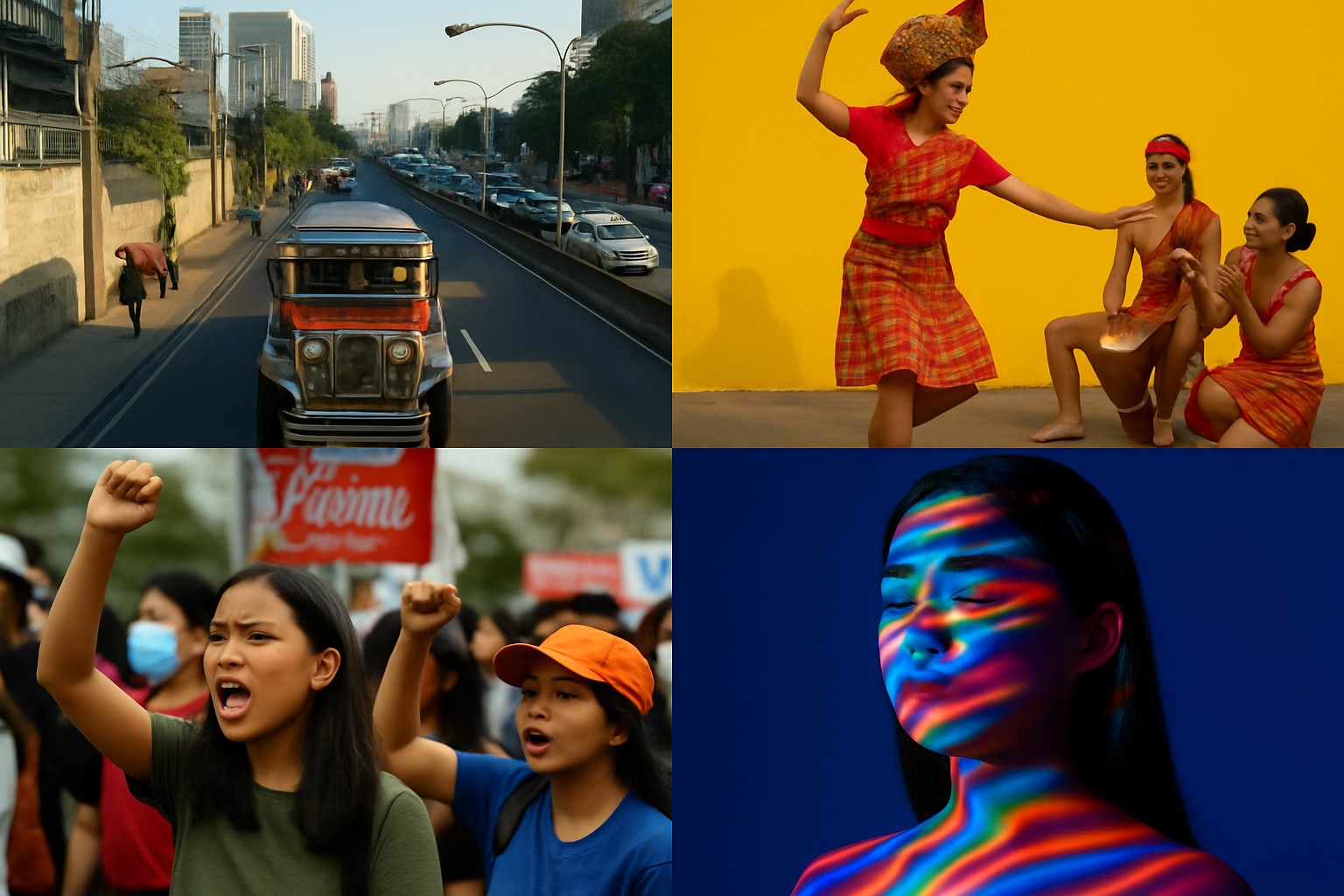
Contemporary photography in the Philippines has been on an exciting rollercoaster of change, fueled by a fresh wave of artists who are genuinely shaking things up and redefining its identity. These creatives often blend diverse cultural backgrounds with cutting-edge tools, breaking through old boundaries and offering new ways to see local imagery. Their distinctive stories and experimental styles don’t just capture the subtle rhythms of Filipino society—they also hold a vital spot in the bigger global conversation around contemporary art.
Contemporary photography in the Philippines grabs your attention by blending fine art, social documentary and experimental approaches. It breaks free from the usual traditional or strictly commercial styles.
Exploring Contemporary Photography in the Philippines Through Visual Stories
Contemporary photography in the Philippines has really blossomed by drawing deeply from its rich historical roots and recent technological changes. Beginning with a post-colonial focus on documentary realism, Filipino photographers have creatively responded to cultural and socio-political shifts and paved the way for fresh and exciting artistic expressions.
The rise of digital platforms like Instagram and Facebook has catapulted Filipino photographers onto the global stage and given their work visibility that was hard to imagine a decade ago.
There’s been a surge in photography collectives fostering a real sense of community through collaboration, mentorship and sharing resources among budding artists trying to find their footing.
Social media has broken artistic exposure free from old boundaries and often shines a spotlight on non-traditional and marginalized voices that might've otherwise gone unheard.
Independent galleries focused on contemporary Filipino art have started to make their mark by providing refreshing alternative venues for exhibitions that don’t fit the mainstream mold.
Universities and institutions are stepping up by offering specialized photography programs that blend theory, hands-on practice and critical discussions to give students a well-rounded experience that prepares them for the real world.
So, Who Are the Artists Really Climbing the Ranks These Days?
Emerging photographers and collectives in the Philippines come from a rich mix of backgrounds blending the hustle and bustle of urban life with the quieter rhythms of provincial towns while embracing bold experimental approaches. Many have snagged recognition at home and on the international stage for their unique storytelling, ranging from deeply personal social documentaries to fresh innovative fine art pieces.
- Young photographers mixing fine art with social documentary to give a fresh spin on familiar stories about Filipino identity.
- Street photographers boldly experimenting with techniques like long exposures and motion blur to turn the everyday into something unexpected.
- Multimedia artists blending photography with installations and digital collages to push the boundaries of storytelling in ways that make you stop and think.
- Emerging female photographers diving into themes of gender, identity and cultural heritage, sharing their views through personal insights and political lenses.
- Photojournalists shining a spotlight on pressing social issues like poverty, migration and climate change to open eyes and stir public awareness.
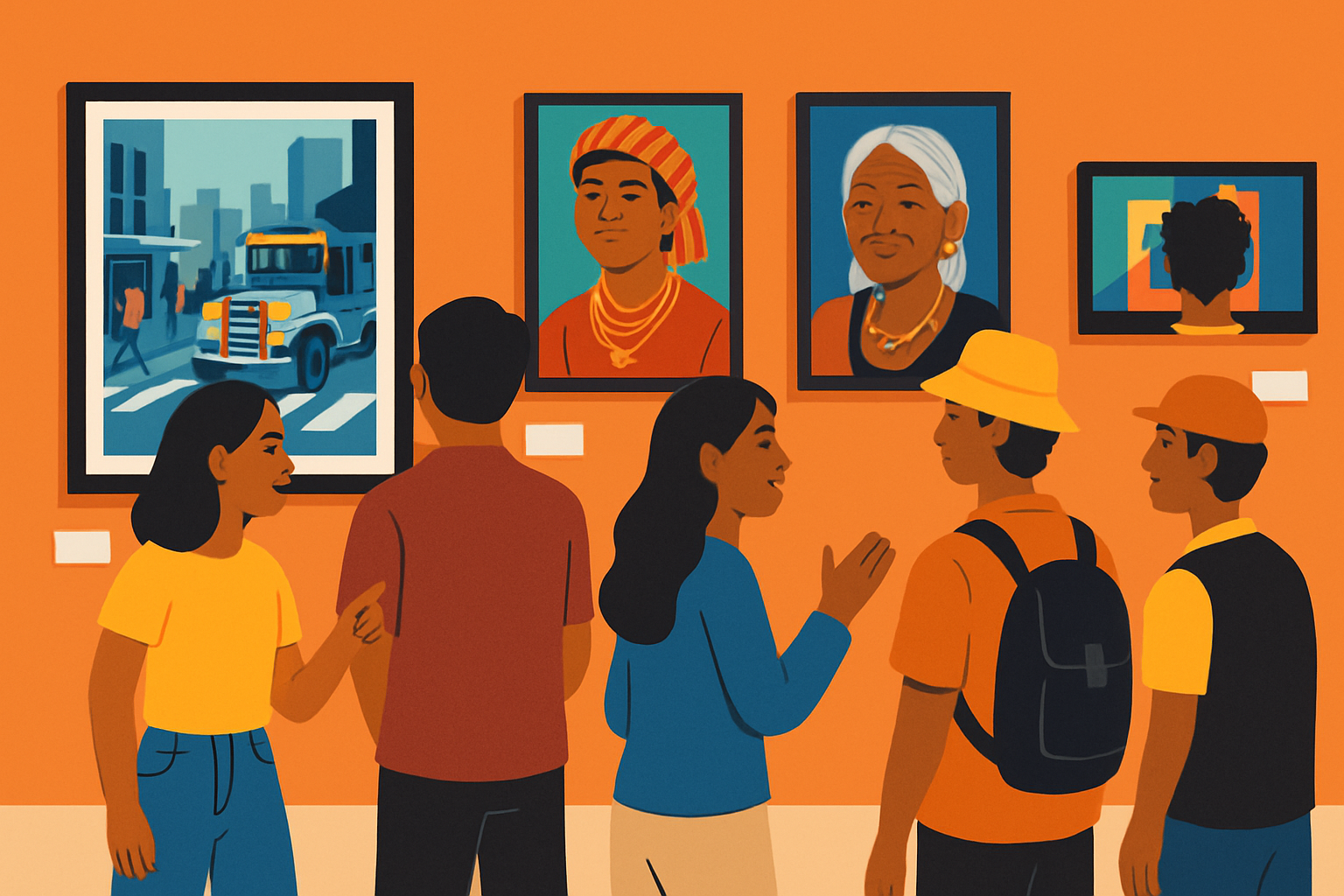
The Way Emerging Artists Shake Up Visual Stories
Emerging artists in the Philippines are shaking up the world of visual storytelling by flipping traditional photographic techniques on their head and shining a spotlight on voices that’ve long been sidelined. Their work delves deep into social inequalities and cultural subtleties, pushing the boundaries of both style and subject matter to spark genuine reflection and lively conversation. This vibrant movement broadens the way we understand Filipino identity and visual culture, often igniting curiosity and admiration both at home and beyond.
"> "Contemporary photography hands us a mirror and a voice all at once. It invites us to see ourselves through fresh eyes—sometimes pushing our buttons, sometimes offering a comforting nod, but always nudging us to grow." — Ana Santos, emerging Filipino photographer and visual storyteller
Fresh Approaches to Style and Technique That Just Might Surprise You
Emerging photographers in the Philippines are shaking things up by creatively blending experimental techniques with the latest new media. They’re cooking up fresh ideas by mixing analog and digital methods in ways that feel both familiar and brand new. Their approach reimagines composition, texture and context, adding layers that draw you in and make you think twice. These bold moves not only deepen their visual storytelling but also gently challenge established artistic norms.
- Mashing up mixed media like collage and painting with photographic prints to create layered artworks that invite a second or even third look.
- Tinkering with digital manipulation to plunge into surrealism, abstraction and conceptual storytelling that makes you pause and think.
- Leaning into documentary realism with a sincere eye to capture social conditions while sprinkling in poetic magic to soften the edges.
- Diving into film photography through techniques like cross-processing and alternative printing to chase one-of-a-kind textures and tones that can’t be replicated digitally.
- Mixing video and installation art to build immersive experiences that grab you by the senses and don’t let go—beyond what a still image can offer.
Main Topics and Themes the heart and soul of our discussion
Emerging contemporary photographers in the Philippines focus on themes like identity, the fast pace of urban growth, social justice struggles, environmental challenges and heartfelt efforts to keep cultural traditions alive.
These themes strike a chord with a diverse crowd by weaving local experiences into the broader tapestry of human struggles and joys. They spark thoughtful conversations about cultural roots and the challenges we face today. Take explorations of identity—they dive deep into the tangled web of ethnicity, gender and diaspora and gently nudge us to ponder what being Filipino means in our ever-shrinking global neighborhood. Meanwhile, themes around urbanization capture the classic tug-of-war between progress and the upheaval it can bring. Environmental photography serves as a vivid wake-up call about the risks looming from climate change.
Effects on the Philippine Photography Industry and Market A Closer Look
Emerging artists have undeniably left their mark on the Philippine photography market, expanding the audience in ways that really shake up the usual commercial playbook. They’re carving out new paths through alternative exhibition spaces and embracing digital distribution.
| Aspect | Traditional Photography Market | Contemporary Emerging Artist-Driven Market |
|---|---|---|
| Audience Reach | Mostly local and commercial buyers, the usual crowd you’d expect | Spans local, national, and increasingly international audiences, catching eyes far and wide |
| Pricing | Generally standardized, often tied to commissions, sticking to tried-and-true formulas | More flexible and varied, drawing in everyone from serious collectors to passionate enthusiasts |
| Distribution Channels | Found through galleries, magazines, and commercial projects, the classic routes | Leveraging online platforms, pop-up events, galleries, and a lively social media scene—navigating the new wave |
| Art Valuation | Heavily focused on technical skill and what the market’s after | Also gives a nod to conceptual depth and fresh innovation, adding layers beyond the obvious |
| Exhibition Venues | Typically traditional galleries and museums, the conventional stage | Frequently seen in independent, alternative, and digital venues—spaces that like to shake things up a bit |
| Visibility | Mainly reaches the classic art buyers and institutions, the familiar circle | Enhanced by social media buzz and collaborative efforts, making the scene a bit more vibrant and inclusive |
Opportunities are definitely on the rise but emerging artists still face common roadblocks like limited funding and struggling to get that elusive gallery representation. They also face stiff competition in an ever-expanding market. On the bright side digital exposure and teaming up with brands, NGOs and cultural organizations offer promising avenues to boost visibility and snag some much-needed financial backing.
Trends That Hint at Changes Here to Stay
Several ongoing trends in contemporary Philippine photography seem to signal lasting change rather than just passing fads. These patterns reveal a strong tilt toward cross-disciplinary work and community engagement and a genuine commitment to sustainability in the art-making process. What is particularly heartening is the rising visibility of women and digital-native artists. This shines a light on a field that’s gradually becoming more inclusive.
Multidisciplinary approaches that mix photography with performance and installation and splashy new media art are really starting to catch on.
Community-focused projects often lean into participatory art and invite everyone to join the party and spark social connection alongside a bit of activism.
When it comes to sustainable and thoughtful art production, the goal is to genuinely tackle ecological footprints and ethical questions—no shortcuts allowed.
The rising tide of female artists is shaking up stories and industry dynamics and pushing us closer to true gender equity.
Digital-native artists are diving headfirst into cutting-edge tech like VR, AR and AI, opening up fresh creative avenues and pulling audiences into their imaginative worlds.
"> “Contemporary photography in the Philippines looks like it’s got quite the bright future ahead, especially when it can roll with the punches and discover fresh ways to express itself. And the best part? It stays deeply rooted in social issues and cultural heritage, which I’ve found gives the work an undeniable heartbeat.” – Marco Reyes, art critic and curator specializing in Southeast Asian contemporary art.
Approaches for Emerging Artists and Industry Stakeholders That Really Work
New photographers aiming to make their mark should craft a genuine brand and nurture meaningful connections beyond the surface. Leveraging digital platforms with a bit of savvy and keeping close ties to local communities while collaborating across various fields can give career growth a nice kick.
- Develop genuine storytelling that captures your personal vision and creates an emotional connection with your audience—it’s about more than just words; it’s about feeling.
- Dive into local and online communities since these are goldmines for creating supportive networks and discovering collaboration opportunities you might never find otherwise.
- Use social media with care. Share your work and engage with your followers to reach audiences across the globe. Remember that quality often beats quantity in meaningful connections.
- Jump into group projects and exhibitions whenever you can because they’re great for boosting your visibility and gaining valuable professional experience.
- Stay committed to learning by feeding your curiosity through workshops, honest critiques, and exploring new ideas and technologies. That’s where growth sneaks in, often when you least expect it.
Galleries, curators and cultural institutions usually do the best by emerging artists working in contemporary photography in the Philippines when they roll out inclusive and accessible programs. These programs shine a light on underrepresented voices, stir up meaningful conversations and champion fresh innovative approaches. Teaming up with academic institutions and community groups can unlock many opportunities. Putting some muscle behind digital infrastructure helps cast a much wider net.
Questions & Answers
How can emerging Filipino photographers gain visibility in the global art scene?
Emerging photographers often turn to digital platforms like Instagram and Facebook to showcase their work. Getting involved with photography collectives for joint projects or participating in international exhibitions or residencies can boost their profile. Building connections with local galleries and entering global photography contests are other solid ways to gain recognition. It is a bit of a hustle but these avenues definitely open some doors.
What themes are most prominent in contemporary Philippine photography?
You will often see themes like identity, urban growth, social injustice, environmental issues and cultural heritage taking center stage. These topics reflect not just personal stories but broader societal concerns and link Filipino narratives to bigger conversations around the world.
Are there specialized photography programs in the Philippines for aspiring artists?
Absolutely. Many universities and institutions now offer focused programs that blend theory, hands-on practice and critical analysis. These courses usually cover the nuts and bolts of technical skills, conceptual thinking and professional development, helping artists gear up for a constantly shifting industry landscape.
What challenges do emerging photographers face in the Philippines?
Common hurdles include limited funding, the challenge of landing gallery representation and stiff competition in the market. That said, alternative paths are worth exploring like gaining visibility through digital channels, crowdfunding or teaming up with NGOs and brands to build a more sustainable presence.
How is technology influencing contemporary photography in the Philippines?
Digital tools, social media and emerging tech like VR and AI are shaking things up and expanding the creative toolbox. Photographers often mix analog and digital techniques, experiment with multimedia formats and leverage online platforms to reach wider audiences, basically redefining what traditional photography looks like today.
What role do photography collectives play in the Philippine art scene?
Collectives are like the unsung heroes here, offering support to emerging artists through mentorship, resource sharing and collaborative projects. They’re vital in amplifying marginalized voices and creating opportunities with exhibitions, workshops and community-driven initiatives. In many ways they keep the creative spirit thriving.

